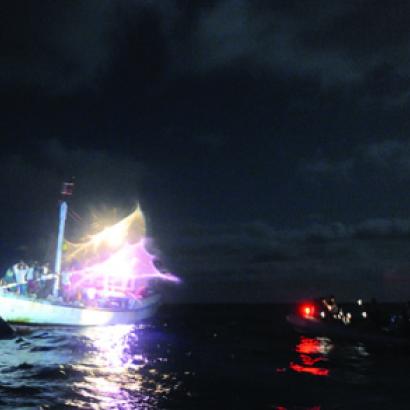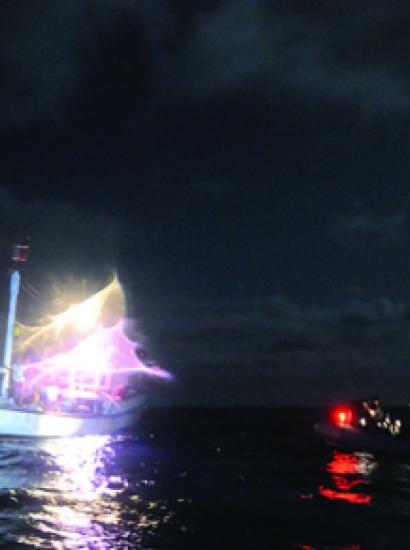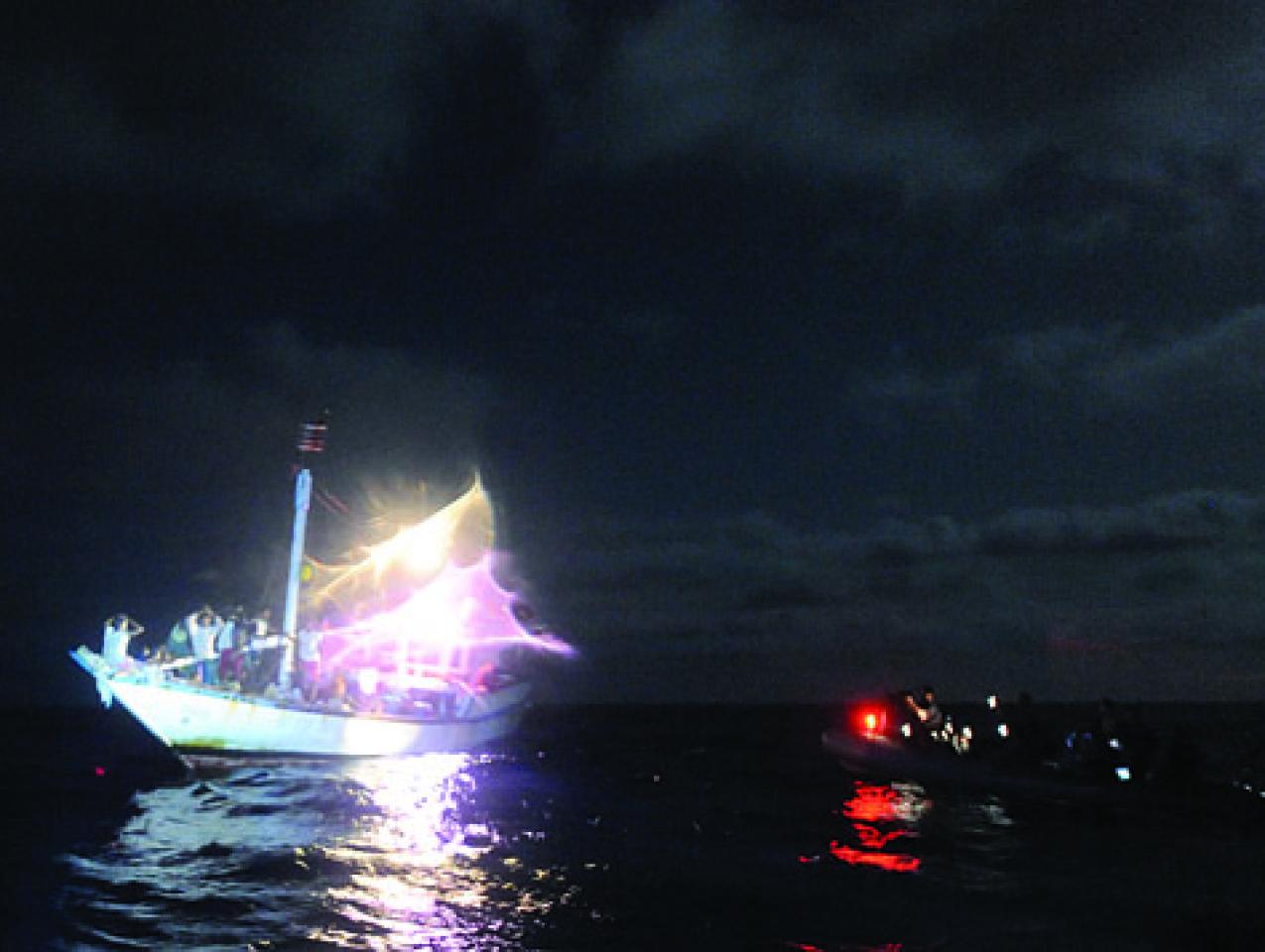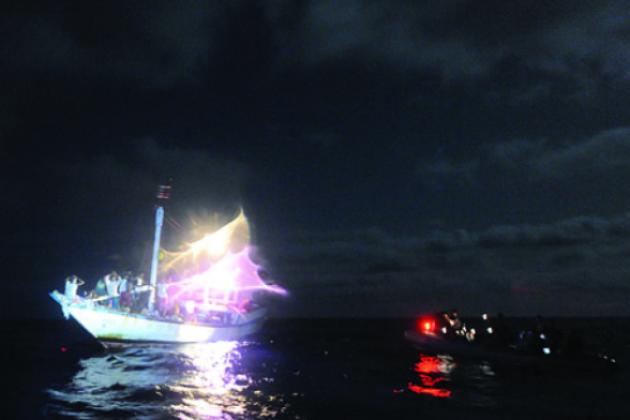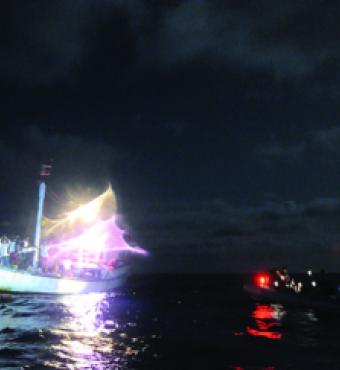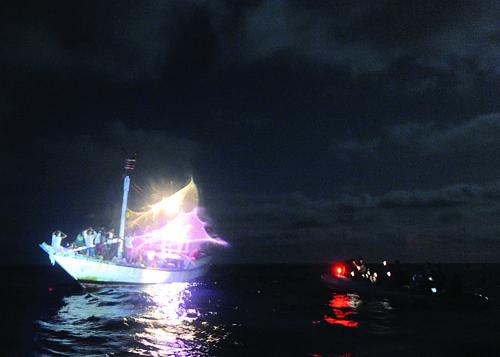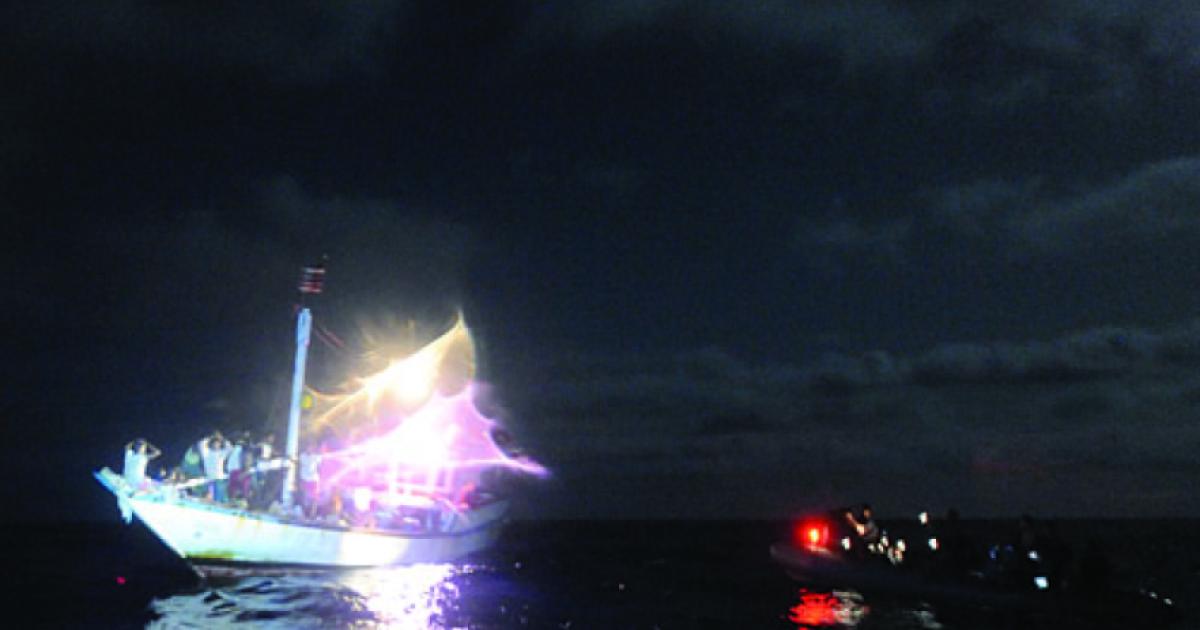- International Affairs
- US Foreign Policy
- US
- Contemporary
- Economic
- Military
- World
- Law & Policy
- Security & Defense
- US Defense
- Terrorism
- Civil Rights & Race
- History
In the early twenty-first century, countries on the littoral of the Arabian Sea face civil war, piracy, radical Islamism, transnational terrorism, and a real risk of environmental and economic failure. Moreover, the strategic importance of these waters as a conduit for maritime trade between Asia and the Mediterranean world is as great as it was when pharaohs built a canal between the Nile and the Red Sea. Then, just as today, the lands around the Bab el-Mandeb—the “Gates of Tears” separating the Red Sea from the Gulf of Aden—were as difficult to pacify as the Red Sea was treacherous to navigate. Historical documents show that in the tenth century AD, ships leaving Egypt sailed in a convoy along the route to India to deter a profusion of local pirates.
Islam came early to this region, during the life of the Prophet Muhammad, carried by small groups of refugees when the young Muslim community was still persecuted in Mecca. In the following centuries, Islam settled throughout the Indian Ocean amid the numerous merchant communities that thrived under the aegis of Pax Islamica. Arab Muslim traders would dominate that commerce for a thousand years.
The Bab el-Mandeb has conjoined Africa and Asia for centuries. It was probably the first route taken by Homo sapiens on their journey out of Africa, and the traffic between the Horn of Africa and Arabia has continued apace to this day. People, goods, and ideas have gone back and forth, giving the Arabian Sea a degree of integration and similarity that is obfuscated by the arbitrary taxonomy of modern geography: Africa versus Asia; the Horn of Africa versus Arabia versus South Asia. Only about 1,800 nautical miles separate Mumbai from Djibouti, the extreme range of a series of seaports and islands that dot the Arabian Sea.
The harsh, unforgiving environment is another factor of uniformity, as is the seasonal rhythm of the monsoon winds, which influences cattle migrations, harvests, and, back in the era of sailboats, the coming and going of merchants. And there is khat, a shrub grown on the plateaus of Ethiopia and Yemen, whose leaves are chewed ubiquitously by the locals for its euphoric properties and for suppressing appetite in times of famine. Given its central location in the Eurasian trade route for at least the past 2,500 years, the region has been continuously exposed to the flux of historical change, to new ideas and technology passing through.
The lands that skirt the Gulf of Aden and the Arabian Sea have run dry, an arid belt stretching from the Nile to the Indus. The environment has continuously degraded over the millennia, partly as a result of local climate change, partly because of human activity, and today drought is acute. The wooded hills have given way to rocky crags, the meadows turned into dust bowls. Both shores of the Bab el-Mandeb are among the hottest places on earth. Water is mostly found in the aquifer that is slowly being depleted; the rivers of the rainy season do not reach the sea. For most of the past thousand years, the lack of natural resources has allowed only light population density, minimal capitalization, and sporadic political centralization. Nomadic tribalism and sparse settlements have been a dominant form of social organization, with the occasional rise of a monarchic dynasty that never quite managed to evolve into more permanent forms of statehood.
These constraints were never lifted in the decolonization era. Britain, France, and Italy ruled over the region lethargically and departed between the 1940s and the 1970s, leaving nominally independent states that proved to be of limited sustainability. Djibouti came to live off strategic rent paid by the United States and France. Somalia failed as a state in 1991, and has since eluded attempts to form a centralized polity. Yemen has been in a marginally better situation, using limited oil reserves to maintain a degree of political cohesion, which after thirty years of one-man rule has been worn down by both political and economic forces.
DEVELOPING THE AL-QAEDA “BRAND”
For foreign powers today, the Horn of Africa is a conundrum. The geostrategic risk is mitigated by the logistical limitations of the local outfits, their lack of capacity to project power outside the region. The costs of trying to impose law and order most certainly outweigh the benefits, at least in financial terms. As long as local violence does not make too much of a splash in the global media, foreign governments look the other way. Even the ransoms paid to Somali pirates are not as costly as the upkeep of a large, multinational fleet patrolling a vast swath of the Indian Ocean. The pirates really had to push the envelope in 2008–9 to provoke a reaction from the international community.
Those whose only vocation has been to push the envelope are the different avatars of Al-Qaeda: the original Al-Qaeda that attacked the African embassies and the USS Cole, and the new Al-Qaeda of the Internet and of the weird stratagems. These are small clusters of people who are incapable of operating on the scale of an insurgency but have a narrow and obsessive focus on throwing down the gauntlet to the United States.
The strength of Al-Qaeda is not in its political claims, its bungled strategic rationale, or its unachievable objectives. Its power rides exclusively on the Al-Qaeda brand, forged in the conflagration of 9/11 and universally recognized. Years later, the brand remains a political liability for Western governments. In the world of the twenty-first century, the world of the United Nations and collective security, mere whiffs of Al-Qaeda are a challenge to the fundamental legitimacy of the international state system. It is to keep alive the power of the brand that a handful of jihadists have remained single-mindedly devoted to killing in the United States and Europe.
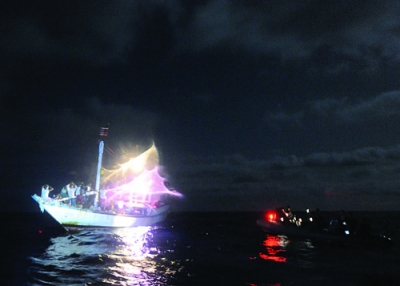
A boarding party from the USS San Jacinto prepares to search a suspected pirate vessel in the Gulf of Aden one night this year. Piracy remains expensive to control and virtually impossible to eradicate in the waters in and around the Arabian Sea, just as in ancient times. U.S. personnel are part of a multinational task force established in 2009 to monitor maritime safety in the gulf and along the east coast of Somalia.
There had always been violence in the encounter between Islam and Western powers. Charles Gordon was decapitated at the Battle of Khartoum, and his head presented to his enemy, Mahdi Muhammad Ahmad. But it is reported that the Sudanese leader had asked before the battle that the life of the British major general be spared. Conversely, General Herbert Kitchener, the British victor of the 1898 Battle of Omdurman, which sealed the defeat of the Mahdist state, ordered his men to dispatch wounded Muslim soldiers. Abd al-Kadir, the great hero of the Algerian resistance who was defeated in 1847 and eventually exiled in Damascus, earned international acclaim for protecting Christians in that city during a bout of sectarian violence in 1860. He and his sons walked through the Christian quarter and invited hundreds to his home, where he promised safety from the mob of Druze and Kurds. Those were times when the vicious and the humane, the petty and the magnanimous walked hand in hand.
A TAPESTRY OF FAILURES
But zoom forward one century and the jihad waged by Al-Qaeda is grotesquely and irredeemably violent. It serves a theatrical objective: Al-Qaeda has no military power, so it can only strike imaginations. But its gory lethality has had the effect of redefining the norms of acceptable behavior in the pursuit of political objectives. Just as the totalitarianism of the twentieth century legitimized genocidal policies in the pursuit of an ideal society, jihadism has enabled strains of anti-imperialist sentiments in the Muslim world to discard strategic considerations and indulge in gory, apocalyptic carnivals. The trivialization of atrocity has enabled another type of jihadism, one focused internally on imposing order through political terror disguised as Islamic tradition and justice. It is the Islam of the veils, the amputations, and the stonings—it is the spirit of the French Revolution under Robespierre, the reign of the guillotine used to force together a society traumatized by revolutions, wars, and deep social change.
But the main challenge for states in this region is not ideology but the economic, environmental, and demographic crises in gestation that could lead to more social dislocation and conflict. In the 1960s and 1970s, current and aspiring regimes across the Bab el-Mandeb flirted with Marxism. But ideological convictions were only skin-deep: Marxism was a tool to handle a society in transition that the rulers did not know how to wield. Human and economic development lagged, and the doctrinal colors eventually dissipated.
From that original failure, things went in different directions. The powers that be retained the autocratic logic of Marxism-Leninism, and they used it to build a rent-based authoritarianism. They used the oil rent when they could, but often had to play a dangerous game of exploiting their own potential for disorder in order to extract military and economic aid from foreign powers—the strategic rent on which they have become so dependent. There was a saying about Somalia in the 1990s that there is no business like aid business. The pattern has held.
Meanwhile, the discontented draped the revolutionary logic of Marxism-Leninism in the green of the Islamic tradition and made a bid for political control. Control is a good thing; law and order are necessary for economic activity, but it all depends on what kind of law and what kind of order. Both autocracies and Islamic fundamentalism are obsessively political, and they lack the disciplined development projects that the fragile countries and vulnerable populations of the Arabian Sea need. Yemen was once a lush land, the Arabia Felix of the Romans. But that place is no more: in its stead are failed, sad lands from which native populations scramble to emigrate. Djibouti pins its dreams on a bridge across the Gates of Tears, but on both shores lie poverty, theft, and violence.








